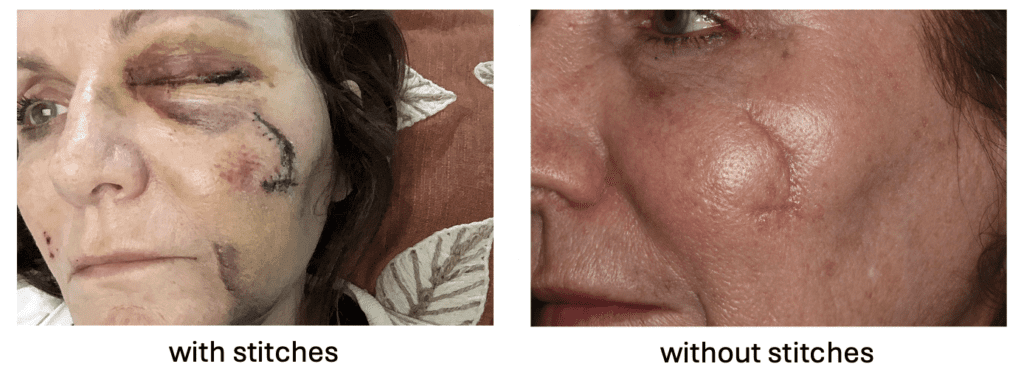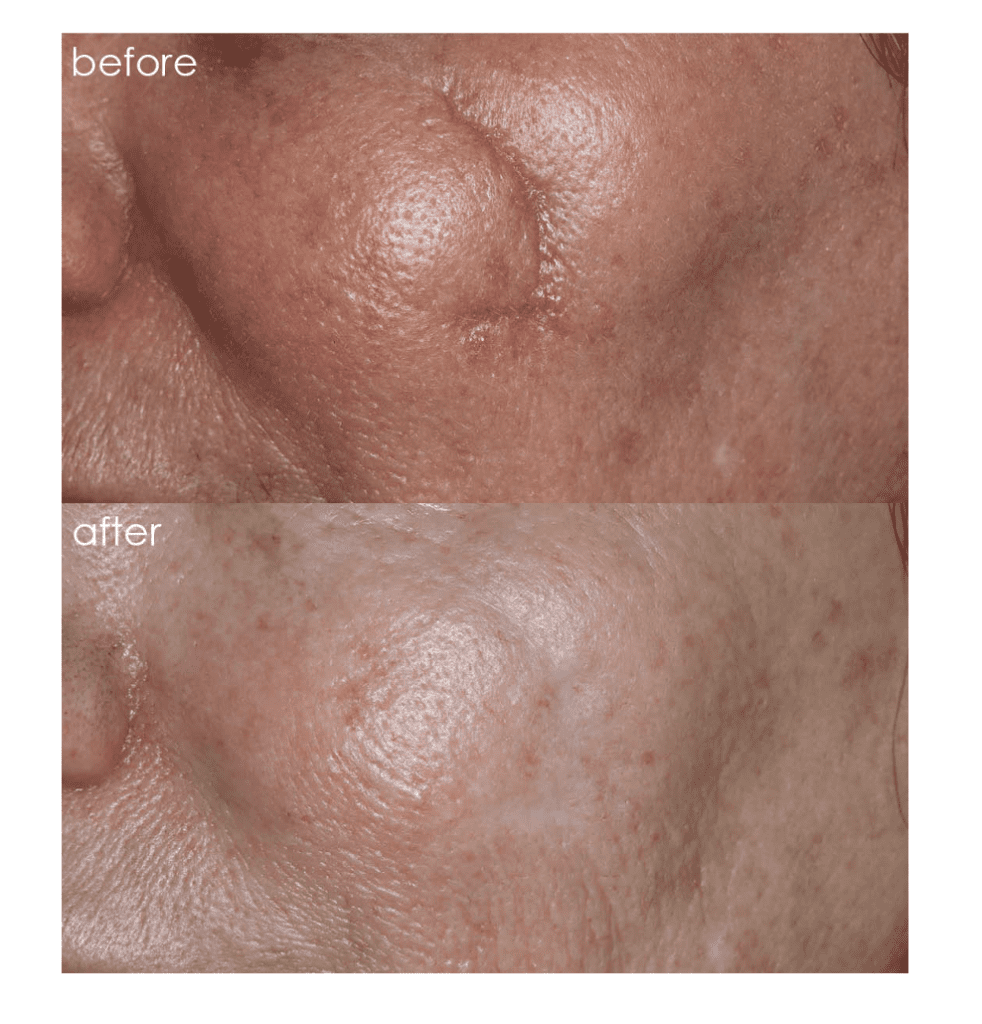While helping build a new home, Donna climbed an extension ladder to take a measurement. “I was about 10 feet high and fell to the ground, which was basically concrete,” she says. “I fell with the ladder… I had six broken bones in the left side of my face and about 14 stitches right in the front in an L shape.”
After the accident, Donna saw a surgeon who told her plastic surgery was likely unavoidable. “He looked at me and, you know, rolled his eyes and he told me 95 percent chance I would want plastic surgery on the scar,” she recalls.
“If This Was Your Face, Who Would You Let Cut It?”
Still reeling, Donna turned to someone she trusted, New Orleans dermatologist Mary Lupo, MD. “My thought was, if I need plastic surgery, then I need to go see Dr. Lupo. And I need to ask her just straightforward—if this was your face, who would you allow to cut it?”

The answer she got was not what she expected. “She looked at me and she said, ‘Donna, I got this. It’s gonna take a little while and you’re gonna have to have patience… but I have got this. You don’t have to have plastic surgery.’”
For the first time since her fall, Donna says she felt hopeful. “I never even considered that it could be handled another way.”
The Long Game of Healing
Donna’s recovery was not instant. Instead of a one-time surgery, she embarked on a months-long plan that called for monthly visits, careful observation and small, strategic treatments. “Every time I sat in the room and she looked at it, she was figuring out what to do next,” says Donna. “It was always a revisiting of where we were in that time and what needed to happen in the next step.”
As her skin healed, different techniques were layered together. Subcision (done by inserting a small needle under the skin) was used to release the tethered scar tissue underneath the surface. “She had a significant avulsion of skin, and every time she would even smile, that scar was pulling and tethering and would actually get more indented,” says Dr. Lupo. To help rebuild volume and prevent the scar from pulling back, a layer of hyaluronic acid filler was placed beneath the skin during treatment.

Dr. Lupo also included light doses of micro-Botox to reduce muscle tension around the scar without freezing her natural expressions and resurfacing sessions with devices like Fraxel, UltraClear and microneedling helped smooth and refine the texture of the area.
Progress was slow by design. “The nonsurgical approach is a process,” says Dr. Lupo. “It’s not a one and you’re done. You have to have a patient who understands that and is willing to see it through.”
“I Don’t Even Think About It Anymore”
Today, Donna says her scar is barely a memory. “I don’t even think about it anymore,” she says. “And if you would see it when it happened, you would think I would be looking at it for the rest of my natural life.”
Friends who watched her through the healing process are just as surprised. “They’ll be like, ‘Donna, I forget you even had an accident,’” she says. “When they look at me, they don’t think, poor girl, she has a scar.”
For Donna, it’s more than just physical healing—it’s getting a part of herself back. “I felt so much like I wasn’t alone anymore… that it wasn’t my scar, that it was our scar.”
